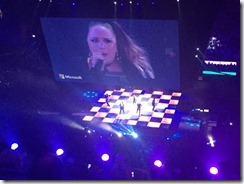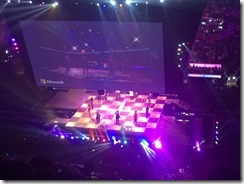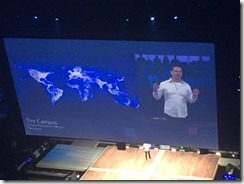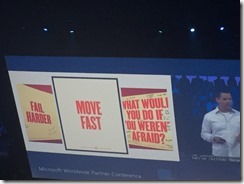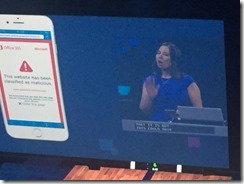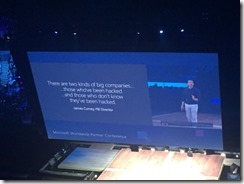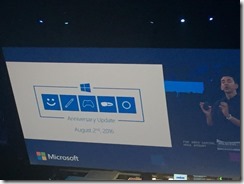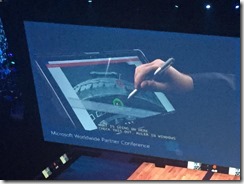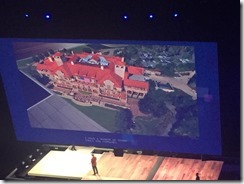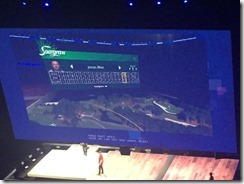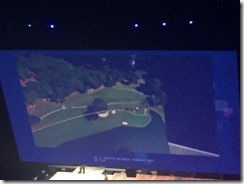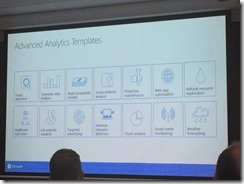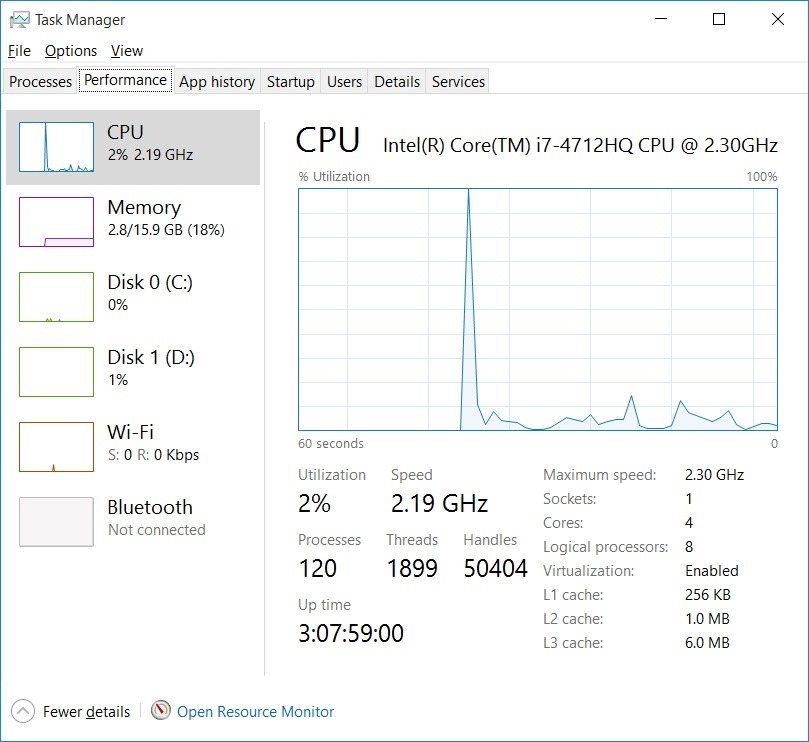Following on from Part 2.
Editorial note: These keynotes started around 8:45am and ran non-stop until 10:45am, but sometimes went over. As a result, it’s a lot of content to cover, hence why I’ve been splitting them out into separate articles. By the time we returned to the MTCC, it was easily 11am, and with lunch, half the day was virtually gone!
The second day of the Microsoft Worldwide Partner Convention (WPC16) formally began with a second vision keynote in the same location as the previous day’s keynote – at the Air Canada Centre. Owing in part to my late night, I arrived a little later than the previous day, and was therefore (rightly) relegated to the bleachers.
Vision Keynote 2 – Innovation
The keynote kicked off with another musical number by Canadian acapella stars Eh440, complete with delegate participation. Once the music died down, Microsoft Executive Vice President (Cloud + Enterprise) Scott Guthrie (a.k.a Scott Gu) took to the stage to welcome the assembled partners.
Microsoft Azure


Scott Guthrie/Introduces Azure Datacentres
Scott starts off by talking about Microsoft Azure, and how Microsoft has deployed Azure datacentres throughout the world, even eclipsing the competition. There are still more plans to continue building new datacentres to satisfy growing demand. The trusted cloud is a strong theme here, as the various security classifications and certifications are displayed across the big screen. Microsoft has been committed to lowering the common barriers to cloud adoption – security, sovereignty and reliability.
Microsoft AppSource
Next up is the new Microsoft AppSource, which provides an app store to Businesses and Government.
The main benefits that AppSource offers include:
- AppSource connects users to partners
- Partners can showcase their craft by adding them to AppSource
- Business users can find and use apps specific to their business or industry domain
- Provides an opportunity for users to easily sample AppSource applications
AppSource neatly underpins functionality within the Azure fabric, can be used to augment business capability, workflow and productivity gains.
Productivity
As highlighted in the previous day’s keynote, Office 365 and Dynamics 365 combine to present real productivity gains and transformation opportunities. Kirk Koenigsbauer, Corporate Vice President, Office 365 Client Apps and Services Team takes to the stage to discuss the evolution of the modern workforce.

Kirk Koenigsbauer talks Office 365 adoption
There’s a healthy analysis of the need for further multitasking support, particularly as Millennials start to enter the workforce. The next generation of workers will be even more technically savvy and adept at multitasking, and office tools and software need to be adaptive. The roadmap for Office 365 has four distinct arms:
1. Collaboration: Better support for more teams working together,
2. Mobility: The modern worker is not always office bound, applications need to be able to work on many different devices,
3. Intelligence: The underpinning of the fabric will be smarter, can learn
4. Trust: Confidence in the security and reliability of the platform is paramount
Facebook Adopts Office 365
After a short video introduction, the newest corporate adopter of Office 365 is revealed – and with some surprise, it’s Internet behemoth Facebook. The crowd welcomes Facebook CIO Tim Campos to the stage. Tim talks about the Facebook company ethos, and its focus on connecting people. Office 365 seems a logical fit for their organisation. The ease of collaboration and the removal of constraints helps their business flow and function.
New Security Controls/Windows 10 Anniversary Edition
We take a short detour through some of the new security features which are coming for Windows 10. A live demonstration compares two live attack scenarios and illustrates how the new changes will better prevent users from potential threats.
We’ll see some of these new controls in the Windows 10 Anniversary Edition. Next up, we’re shown some new augmented reality capability which enables users to interact with their environment. The demonstration sees the use of a large tyre, and for comic relief, we’re shown the destruction of the tyre for use in demonstrating how damage to the tyre can be marked up on a Surface device.
Here’s some other neat things coming in the Anniversary Update (source: theverge.com):
- Windows Ink: Windows Ink is without a doubt the best part of the Anniversary Update. It’s essentially a central location to find built-in or third-party apps that work with your stylus. You can use the new sticky notes to note down reminders, and they’ll even transform into true reminders as Cortana understands what you write.
- Microsoft Edge extensions: If you’re a fan of Chrome extensions, then you’ll be glad to hear that they’re heading to Microsoft’s Edge browser. The Anniversary Update brings support for extensions, and it’s now up to third-party developers to fill the Windows Store with their add-ons.
- Cortana improvements: Microsoft’s digital assistant, Cortana, debuted on Windows 10 last year, and the software maker is bringing it to the lock screen with the Anniversary Update. You’ll be able to ask it to make a note, play music, set a reminder, and lots more without ever logging in. Cortana is also getting a little more intelligent, with the ability to schedule appointments in Outlook or options to send friends a document you were working on a week ago.
- Dark theme and UI tweaks: You can switch on what I call even darker mode in settings, and it will switch built-in apps that typically use a white background over to black.
- Windows Hello: Windows Hello is a new feature that Microsoft has added to Windows 10. It uses a special camera (usually found on the latest PCs and laptops) to scan your face and let you log into Windows without using a password.
- Windows 10 apps on Xbox One: Seems like a bit of a no-brainer, you’ll soon be able to run Windows 10 apps on the Xbox One
For the Enterprise


Windows as a service and Surface as a service
The next big announcement is Windows 10 Enterprise E3 which provides “Windows as a Service” for as little as $7 (USD?) per user per month. There’s also “Surface as a Service” where users can lease a Surface from Microsoft on a per monthly basis.
HoloLens
We’re getting close to wrapping up the second Vision Keynote, and what better way to finish things by revisiting Microsoft HoloLens? This time it is the US PGA Golf, and the augmented reality demonstration gives us a look at how visual immersion, coupled with the power of statistics creates a brand new way of navigating a golf course.
In this demonstration, the course is zoomed in, and we’re shown different holes and the shots made by players competing in a tournament at the venue. Overlaid into the render are player shots, their distances and where the ball ended up. Players can be compared side-by-side. It’s quite impressive.
Summary
That, in a nutshell, is the second Vision Keynote. I omitted a few names and some bits I found less interesting, but most of the big announcements have been covered off (but let me know if I missed anything). From my point of view, some highlights:
- Microsoft’s really backing this cloud thing!
- Breaking down the barrier to cloud adoption has been a major focus,
- Real cost and productivity savings are on offer,
- The widely anticipated “Windows as a Service” (hinted in 2015 and earlier) is soon to be a reality,
- AppSource is being backed hard,
- HoloLens just keeps getting more impressive
We returned to the sunny Toronto summer, to start the rest of day 2. This will be covered in the next article.

